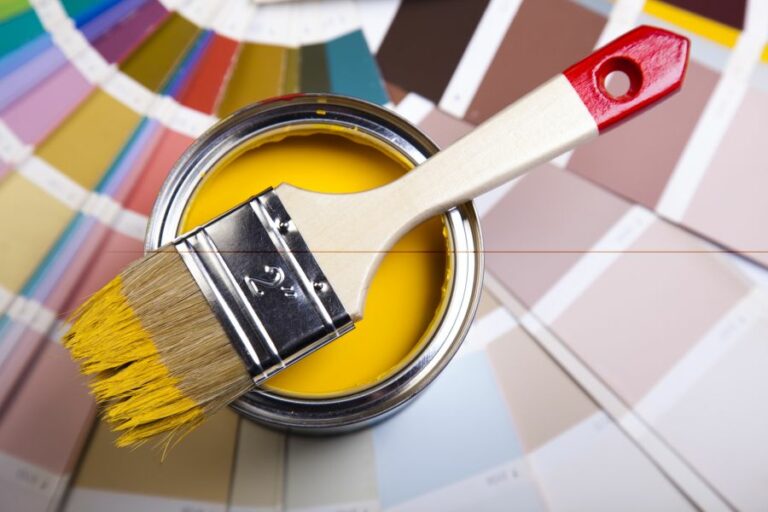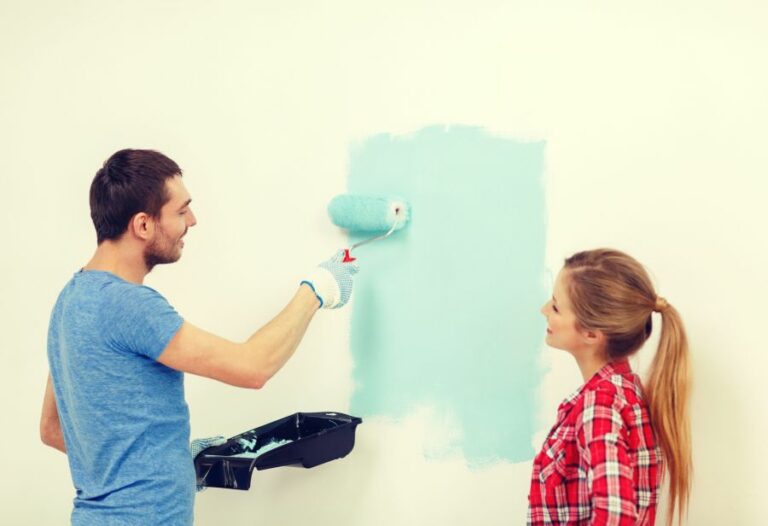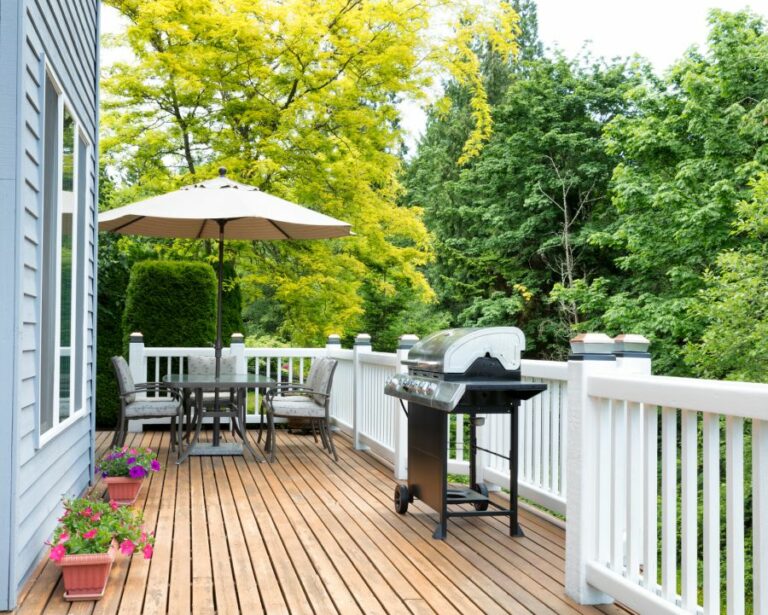Copper Paint For Outdoor Metal, 25 Things You Should Know
Are you considering giving your outdoor metal surfaces a fresh, unique look that improves aesthetics and adds protection? Then copper paint might be the perfect solution for you. As an expert in paint products and applications, I’m confident I can help guide you through the benefits and application process of using copper paint for outdoor metal items. So, let’s dive into this fantastic option and ensure your outdoor space gets the stylish and durable upgrade it deserves.
Copper paint for metal outdoor:>
Copper paint for outdoor metal surfaces provides aesthetic appeal, corrosion protection, and antifouling properties. Available in solvent-based, water-based, and powder-coating forms, it is essential to choose the right type based on intended use, surface preparation, application techniques, cost, and availability. Proper surface preparation, priming, and sealing ensure lasting professional results.

Ready to amp up your outdoor metal decor? Discover the wonders of copper paint for outdoor metal surfaces and how it can transform your space! Keep reading to uncover application tips, maintenance, and more!
Contents
- 1 Copper Coating Paint for Outdoor Metal Surfaces
- 2 Is it Possible to Paint Metal Surfaces to Resemble Copper?
- 3 Is Copper Spray Paint Effective?
- 4 Is Copper Spray Paint Prone To Turning Green?
- 5 Does Copper Metallic Paint Actually Contain Real Copper?
- 6 Is it Possible to Apply Paint on Exterior Copper Surfaces?
Copper Coating Paint for Outdoor Metal Surfaces
Copper paint for outdoor metal surfaces can offer excellent protection and aesthetic appeal to a wide range of applications.
• Benefits of Using Copper Paint for Outdoor Metal Surfaces
– Aesthetic Appeal
Copper paint can provide a warm, inviting appearance to outdoor metal surfaces that is both unique and timeless. The natural patina that develops over time adds to its appeal, making it an attractive option for exterior metal surfaces such as gutters, railings, furniture, and architectural accents.
– Corrosion Protection
Copper paint also offers excellent corrosion protection for metal surfaces. It forms a barrier against moisture and other corrosive elements, thus increasing the lifespan of the metal and reducing the risk of rust and other damage that can weaken structural integrity.
– Antifouling Properties
Copper-based paints are known for their antifouling properties, which make them an ideal choice for marine applications, such as boats and outdoor metal structures in coastal areas.
Antifouling paints work by releasing small amounts of copper into the water, which inhibits the growth of marine organisms, thus reducing the risk of hull fouling and maintaining the performance and efficiency of boats.
• Types of Copper Paint for Outdoor Metal Surfaces
– Solvent-based Copper Paint
Solvent-based copper paint is a traditional choice for outdoor metal surfaces. This type of paint uses a solvent to dissolve the copper particles, forming a smooth and durable coating on the metal surface. It generally offers good corrosion protection and easy application.
– Water-based Copper Paint
Water-based copper paint is a newer option, offering an environmentally friendly alternative to solvent-based paints. It contains copper particles suspended in water, which evaporates as the paint dries to form a tough, long-lasting coat.
This type of paint may provide superior adhesion and durability compared to solvent-based counterparts, especially in challenging outdoor settings.
– Copper Powder Coating
Copper powder coating involves applying a dry, finely ground copper material to the metal surface, which is then heated to a high temperature, causing the copper to melt and fuse into a durable, corrosion-resistant coating.
Powder coating offers a range of finishes and can provide excellent long-term protection.
• Choosing the Right Copper Paint for Your Project
To choose the best copper paint for your outdoor metal project, consider the following factors:
– Intended Use
Consider how and where the painted metal item will be used, and choose the type of copper paint best suited for these conditions.
For example, antifouling copper paint would be ideal for marine applications, while water-based copper paint might be a better option for architectural accents exposed to heavy weather or pollutants.
– Surface Preparation and Application
The surface preparation and application techniques required for each type of copper paint can vary. Be sure you have the appropriate equipment and experience, or else consider hiring a professional paint applicator if necessary.
– Cost and Availability
Compare the cost and availability of the different types of copper paint and choose the one that meets your budget and needs. Keep in mind that the time and effort required for surface preparation and application may also impact the overall cost.
• Surface Preparation and Application Techniques for Copper Paint
– Proper Surface Preparation
To achieve optimal results, thoroughly clean and prepare the metal surface before applying copper paint. Remove any loose paint, rust, dirt, or other debris using a wire brush or sandpaper.
Next, clean the surface with a suitable metal cleaner to remove grease, oil, or other contaminants. Allow the surface to dry completely before applying the paint.
– Primer Application
Apply a suitable primer that is compatible with the type of copper paint you’ve chosen. Primers improve the adhesion of the paint, provide additional corrosion protection, and enhance the final appearance of the coated surface.
– Copper Paint Application
Apply the copper paint according to the manufacturer’s instructions using a brush, roller, or spray gun, depending on the type of paint and the surface being painted. Apply multiple thin coats rather than a single thick coat, allowing each coat to dry thoroughly before applying the next one.
Be sure to follow recommended drying times and conditions to ensure optimal adhesion and durability.
– Sealing and Maintenance
To further protect your copper-painted outdoor metal surface, consider applying a compatible clear sealant. Regularly inspect and maintain the painted surface, promptly addressing any signs of wear, damage, or corrosion.
In conclusion, copper paint for outdoor metal surfaces offers a range of benefits, including aesthetic appeal, corrosion protection, and antifouling properties.
By understanding the different types of copper paint available, choosing the best paint for your project, and properly preparing and applying the paint, you can achieve long-lasting, professional results that enhance and protect your outdoor metal surfaces.
Is it Possible to Paint Metal Surfaces to Resemble Copper?
A popular trend in interior design and artistry is the use of metallic finishes, particularly copper. This warm, reddish metal adds an elegant touch to various surfaces, from furniture to home decor.
However, purchasing actual copper items can be costly. So, is it possible to achieve that copper look by painting a metal surface? The short answer is yes.
• Painting Techniques to Achieve a Copper Look
Several techniques can be used to achieve a copper finish on a metal surface. These techniques rely on using a combination of colors, textures, and application methods. Some commonly used methods include:
1. Spray Painting
Spray paint is an easy and quick way to achieve a copper finish on a metal surface. There are numerous brands that offer copper spray paint, and you must look for one that matches the color and finish you desire. Follow these simple steps to achieve a copper finish using spray paint:
- Clean the surface: Before starting, it’s crucial to clean and prepare the surface to ensure proper adhesion and a smooth application. Use a mild soap solution and a soft cloth to remove any dirt, dust, or grease. Rinse thoroughly with water and allow the surface to dry completely.
- Prime the surface (optional): While not always necessary, using a primer can help improve the paint’s adhesion and durability. Apply a metal primer according to the manufacturer’s instructions and let it dry completely.
- Apply the copper spray paint: Shake the spray paint can well before using. Hold the can approximately 10-12 inches away from the surface and apply the paint using a sweeping motion. Apply thin coats, allowing each layer to dry before applying the next one. Usually, 2-3 coats should suffice.
- Seal the surface (optional): To protect the copper finish and increase its durability, you can apply a clear sealer after the paint has dried completely.
2. Brush Painting
Brush painting allows you to create a more artistic and customized copper finish, as you can mix and layer different colors. A combination of acrylic or oil-based paints can be used for this method.
- Choose your colors: Start by selecting several shades of copper, gold, and brown paints to create a layered, authentic look. Metallic acrylic paint can be used as the base color, while oil-based paints work well for adding details and textures.
- Paint the base color: Apply a layer of metallic copper paint on the cleaned and primed metal surface. Allow it to dry completely before moving on to the next step.
- Add depth and texture: With a small brush or sponge, dab spots of brown and gold paint to mimic the natural patina found in aged copper. Allow the paint to dry between each layer and blend colors until the desired effect is achieved.
- Seal the surface (optional): Apply a clear sealer to protect your work and increase its longevity.
3. Faux Verdigris Technique
A verdigris finish mimics the natural patina that forms on copper over time. To achieve this effect, follow the steps below:
- Apply a base coat: After cleaning and priming the surface, apply a layer of metallic copper paint. Allow the paint to dry completely.
- Create a verdigris glaze: Mix green and blue acrylic paints with a glazing medium to create a translucent glaze.
- Apply the glaze: Use a small brush or sponge to dab the glaze onto the copper base coat, focusing on areas where patina would naturally occur, such as crevices and recesses. Let the glaze dry completely.
- Seal the surface (optional): Apply a clear sealer to protect the verdigris finish and increase its durability.
• Choosing the Right Copper Paint
A significant factor in achieving a realistic copper finish is choosing the right paint. Look for paints specifically designed for metallic effects, such as those made by Modern Masters, Rust-Oleum, and Krylon.
It’s essential to consider factors such as the color sheen, drying time, and the paint’s compatibility with the surface you’re working on.
It’s also crucial to practice your technique and become familiar with the paints before starting your project. This can help you achieve the desired outcome with greater ease and precision.
• Conclusion
Achieving a copper finish on a metal surface is possible by using different painting techniques and the right type of paint. It’s essential to clean and prepare the surface, choose suitable colors and application methods, and practice the technique before starting the project.
With patience and attention to detail, you can transform any metal surface into a convincing copper masterpiece.
For more information on painting techniques and materials, visit The National Center for Preservation Technology and Training.
Step | Description |
|---|---|
1 | Clean the metal surface |
2 | Apply primer |
3 | Paint with copper-colored paint |
4 | Add details (optional) |
5 | Apply a clear topcoat (optional) |
Is Copper Spray Paint Effective?
In recent years, there has been a surge of interest in copper finishes for various applications, from home decor to arts and crafts projects. Copper spray paint is an attractive option due to its affordability and ease of use.
• Evaluating the Effectiveness of Copper Spray Paint
Many people wonder if copper spray paint actually works to create a realistic and durable copper finish. The simple answer is yes. Copper spray paint can work exceptionally well if used correctly. The key to success lies in choosing the right product and diligently following the manufacturer’s guidelines.
Several reputable brands offer high-quality copper spray paints, such as Rust-Oleum, Krylon, and Montana. These products are formulated to provide a bright, metallic, and long-lasting finish that closely resembles the appearance of genuine copper. It is crucial to note, however, that the final result will vary depending on factors like surface preparation, application technique, and the choice of clear coat protection.
– Factors Affecting Spray Paint Results
As mentioned above, the quality and appearance of copper spray paint can be influenced by multiple factors, including:
- Surface Preparation: The surface you plan to paint should be clean, smooth, and free of any oils, dust, or debris to ensure proper adhesion of the paint. In some cases, it may be necessary to sand or prime the surface before applying the paint. Manufacturers often provide detailed instructions and surface preparation guidelines on the product label.
- Application Technique: When using copper spray paint, it is essential to apply several thin coats rather than one thick coat, which will prevent drips, pooling, and uneven results. It is also vital to ensure that each coat is completely dry before applying the next one.
- Clear Coat Protection: To ensure the longevity and durability of the copper finish, it is recommended that you apply a clear coat sealant after the final paint layer has cured. This additional step will protect the paint from scratches, fading, or damage caused by exposure to the elements, making it an especially important consideration for outdoor applications.
• Advantages & Disadvantages of Copper Spray Paint
While copper spray paint offers an affordable and user-friendly method for achieving a copper finish, there are a few factors to consider before deciding if it is the best option for your project.
– Advantages
- Cost-Effective: Copper spray paint is significantly less expensive than using genuine copper materials or professional plating services. For those looking to achieve a metallic look on a budget, spray paint is an excellent option.
- Versatility: Unlike traditional copper plating, copper spray paint can be applied to a wide variety of surfaces, including wood, plastic, metal, and ceramics.
- Easy to Use: Copper spray paint is typically easy to apply, even for novices. It requires minimal surface preparation and no special equipment, making it a popular choice for DIY enthusiasts.
– Disadvantages
- Less Durable: Although high-quality copper spray paints can provide a long-lasting finish, they are generally not as durable as real copper plating or other professional methods.
- Variable Results: The final appearance of the copper finish will depend on factors like surface preparation and application technique, so achieving uniform and professional-looking results may be more challenging than using authentic copper materials.
• Tips for Achieving Success with Copper Spray Paint
Follow these recommendations for achieving the best possible results with your copper spray paint project:
- Choose a high-quality product from a reputable manufacturer and read the label carefully for specific guidelines on surface preparation, application, and clear coat protection.
- Take your time with surface preparation, ensuring the surface is clean, smooth, and, if necessary, primed before applying the paint.
- Apply the paint using several thin, even coats, allowing each coat to dry completely before applying the next one.
- Protect your finished project with a clear coat sealant to enhance its durability and resistance to wear or damage.
- Practice your application technique on a scrap piece or inconspicuous area before tackling your main project.
The Copper Development Association Inc. (CDA) is an excellent resource for additional information on copper finishes and their applications.
In conclusion, copper spray paint can work remarkably well for a wide range of applications, offering cost-effective and versatile options for achieving a distinctive copper finish.
By choosing a high-quality product, meticulously preparing the surface, and following best practices for application, you can achieve impressive results comparable to genuine copper materials.
Is Copper Spray Paint Prone To Turning Green?
Copper is a popular choice for both artists and fashion enthusiasts due to its natural beauty and ability to patina over time. Many people enjoy the green hues that develop on the copper surface as it reacts with external factors like exposure to air and moisture.
For some, the question arises whether or not using copper spray paint will produce the same green patina effect.
• Understanding the Copper Patina Process
Before diving into the world of copper spray paint, it is essential to first comprehend the natural process that causes the green patina to develop on copper surfaces.
This green hue is the result of a chemical reaction called “oxidation,” which occurs when copper comes into contact with elements such as oxygen, water, and various compounds in the air over an extended period.
This reaction leads to the formation of a protective layer called “verdigris” or copper sulfate, which is responsible for the characteristic green color often found on aged copper materials such as architectural details, statues, and even household goods like pots and pans.
The verdigris serves as a protective barrier against further corrosion or damage, allowing the copper beneath to stay strong and durable.
– Factors Influencing Patina Formation
Various factors affect the rate and nature of patina formation on copper surfaces. The climate and environment play a significant role, with humid, rainy, and polluted areas producing more rapid patina formation than dry, clean surroundings.
Similarly, the type of copper or copper alloy used can also influence the oxidation process, with some metals being more prone to green patina formation than others.
Additionally, the surface condition and treatment of the copper material can also impact the patina development, with scratches, nicks, and other imperfections often hastening the reaction.
• The Role of Copper Spray Paint
Now that we understand the process behind the natural patina that forms on copper surfaces, it’s time to address the central question: Will copper spray paint turn green?
Copper spray paint contains fine copper particles suspended in a binding agent, which allows it to adhere to various surfaces and create a metallic finish closely resembling natural copper.
However, it is essential to acknowledge that copper spray paint is not pure copper, and the metal particles in the paint are often combined with other components (e.g., resins, pigments) that can influence the oxidation process.
As a result, the patina formation on copper spray paint may be different from that on pure copper surfaces, and the green verdigris effect may not develop in the same way or time frame.
The paint’s protective binders may, in some cases, help resist corrosion and tarnish, delaying or inhibiting patina formation.
That being said, several techniques can help induce the green patina effect on copper spray paint surfaces, which we will explore in the following sections.
– Creating Artificial Patina with Copper Spray Paint
There are a few methods artisans can employ to stimulate or replicate the green patina effect on copper spray paint surfaces. These techniques may require additional tools, materials, and patience, but the results can be rewarding for those seeking this unique aesthetic.
Using Patina-Accelerating Products
Several companies offer products specifically designed to accelerate the patina process on copper and metal surfaces. These solutions typically contain chemicals that react with the metal particles in the copper spray paint, encouraging a more rapid patina formation.
One example of such a product is Modern Masters Metal Effects, which offers both green and blue patina effect finishes that can be applied directly over copper spray paint.
When using these products, it is essential to follow the manufacturer’s guidelines to ensure the best possible results. Proper surface preparation, drying times, and application techniques will all contribute to the success of this method.
DIY Patina Solutions
For those feeling more adventurous, creating a DIY patina solution is another option. Various household items can be utilized to achieve this effect, the most popular being vinegar and salt mixtures.
A simple concoction involving equal parts white vinegar and water, with a few tablespoons of table salt, can be sprayed or brushed onto the copper spray paint surface. The vinegar reacts with the copper particles, and the salt helps accelerate the oxidation process.
To produce varying shades of green and a more natural-looking patina effect, try experimenting with different salt concentrations and application methods (e.g., sponging, stippling).
It is essential to allow time for the solution to dry on the surface and for the patina to develop fully before handling or sealing the object.
Note: Always test these methods on a small, inconspicuous area before applying them to the entire surface, as results may vary depending on the specific copper spray paint used and other factors.
– Sealing the Finish
Once the desired patina effect has been achieved, it is crucial to seal the surface with a protective clear coat or wax to preserve the finish and prevent further changes.
Many products on the market are designed explicitly for sealing metallic finishes, such as Permalac from Peacock Laboratories Inc. Proper sealing will not only protect the patina but also help maintain the durability and lifespan of the underlying copper spray paint.
• In Conclusion
While pure copper spray paint may not naturally turn green as quickly or predictably as untreated copper surfaces, there are several methods available to replicate or expedite the patina formation process.
With patience, experimentation, and proper technique, artisans can achieve remarkable green patina effects on copper spray paint surfaces that closely mimic the natural beauty of aged copper materials.
Does Copper Metallic Paint Actually Contain Real Copper?
Copper metallic paint is a popular decorating choice for many who want to bring the beauty and warmth of copper into their interior spaces. While copper metallic paint may have the appearance of real copper, many consumers are curious to know if it truly contains real copper.
• Composition of Copper Metallic Paint
Copper metallic paint is made using copper flakes or powders, which are suspended in a liquid medium, typically a water-based or solvent-based solution. These copper particles give the paint its characteristic metallic sheen and visual texture.
The percentage of real copper in the paint may vary between different brands and formulations, but it is typically a relatively small amount. It is also worth noting that some lower-priced metallic copper paints use a combination of copper and other metals, such as aluminum or brass, to create the metallic effect.
These hybrid products may not have the same warmth and depth of color as true copper metallic paint.
– Clear Coats and Sealants
In many cases, manufacturers of copper metallic paint recommend applying a clear topcoat or sealant after the paint has dried. This is because the copper particles in the paint can be prone to oxidation or tarnishing, which may result in a dulling of the metallic finish over time.
A protective clear coat can help to preserve the vibrant color and luster of the paint by sealing the surface and protecting the copper from the elements.
• Advantages of Copper Metallic Paint
There are several reasons why copper metallic paint is widely used in both residential and commercial settings. Here are some of the key benefits of this type of paint.
– Aesthetic Appeal
Copper metallic paint offers a sophisticated and unique finish that adds visual interest and elegance to any space. The warm tones and metallic sheen can catch the eye and make a bold statement, making it a great choice for feature walls, accent pieces, or creative design elements.
– Versatility
Copper is a versatile color that pairs well with many different design styles and color palettes. It can be used in modern, industrial, or traditional settings and complements a wide range of other colors, from earthy neutrals to bold jewel tones.
– Easy Application
Most copper metallic paints are easy to apply using standard painting techniques, such as rolling, brushing, or spraying. This makes them an accessible and relatively fuss-free option for the average DIY enthusiast.
• Limitations of Copper Metallic Paint
Despite its many advantages, there are some caveats to keep in mind when working with copper metallic paint.
– Fading and Tarnishing
As mentioned earlier, the copper particles in the paint are prone to oxidation and tarnishing. While a clear topcoat can help to reduce this issue, it does not guarantee that the paint will remain vibrant and lustrous forever.
In high-humidity environments or spaces with frequent temperature fluctuations, the risk of tarnishing may be even greater.
– Potential Allergies
Copper is a known allergen for some individuals. If you’re working with copper metallic paint, it is essential to use proper safety precautions, such as wearing gloves and a face mask, to minimize the risk of allergic reactions.
– Cost
Copper metallic paint products can be more expensive than standard interior paints, especially if you opt for a true copper-content paint rather than a hybrid or imitation product.
• Tips for Successful Use of Copper Metallic Paint
If you decide to incorporate copper metallic paint into your space, keep these tips in mind for the best results.
– Surface Preparation
Copper metallic paint typically adheres best to smooth, even surfaces. Be sure to carefully prepare your surface by cleaning, filling any holes or cracks, and sanding as needed to ensure a flawless finish.
– Paint Technique
To maintain the desired metallic effect, avoid overloading your paintbrush or roller, and try to apply the paint in thin, even layers. Each layer should be given ample time to fully dry before applying the next one.
– Clear Coat Application
As noted earlier, applying a clear coat after the paint has dried is highly recommended to protect the copper particles and maintain the paint’s appearance. Choose a high-quality clear coat and follow the manufacturer’s instructions for application.
In conclusion, copper metallic paint does contain real copper particles that give it its unique metallic finish. By following the tips and considerations provided in this article, you can make the most of this luxurious and versatile paint option in your interior spaces.
For more information on copper metallic paint, visit the Copper Development Association’s website, which offers a wealth of resources on the subject.
Is it Possible to Apply Paint on Exterior Copper Surfaces?
Copper is a popular choice for exterior design elements due to its unique appearance, durability, and natural resistance to corrosion. However, over time, copper can begin to show signs of wear and may need a fresh coat of paint to restore its beauty.
• Reasons to Paint Exterior Copper
While copper is naturally corrosion-resistant, there are several factors that might prompt you to consider painting your exterior copper elements:
– Aesthetics
Copper develops a patina or greenish-blue film on its surface over time as it oxidizes. Some people appreciate the aged appearance, while others may prefer a more polished and shiny finish. You can easily achieve the desired look by applying paint to the copper surface.
– Protective Coating
Although copper has inherent resistance to corrosion, in certain harsh environments or polluted areas, it could corrode more rapidly. Applying a coat of paint can provide an additional layer of protection and prolong the lifespan of your exterior copper features.
– Heat Reflection
Copper is a great heat conductor, but this property can also cause it to become quite hot under direct sunlight. A lighter-colored paint can help to reflect some of the sun’s rays and prevent the copper from getting too hot.
• Preparing the Exterior Copper Surface
Before you can apply paint to exterior copper, proper surface preparation is essential to ensure good adhesion and a lasting finish.
– Cleaning
Make sure to clean the copper surface thoroughly to remove dirt, oil, and any other contaminants. A mix of mild detergent and water should suffice, but for heavier soiling, a commercial copper cleaner can be used. Rinse the surface well with clean water and allow it to dry completely.
– Removing Patina and Oxidation
The next step is to remove the patina and oxidation from the copper surface. There are several methods for this, but I recommend using a fine-grade abrasive pad, like a scouring pad or steel wool, to rub away the patina gently.
Be careful not to apply too much pressure or use excessively abrasive materials, as this might scratch the copper surface.
– Using a Primer
Once the surface is clean and free of patina, applying a suitable primer is necessary to ensure the paint will adhere properly to the copper. A metal primer specifically formulated for copper surfaces is recommended.
You may find more information on appropriate primers from specialized websites, such as the Copper Development Association. Follow the manufacturer’s instructions and allow the primer to dry completely before proceeding.
• Selecting the Right Paint for Exterior Copper
When choosing the type of paint to use on your exterior copper, consider the following factors:
– Compatibility with Copper
Not all paint types are compatible with copper surfaces. It is crucial to select a paint that is formulated for use on metal substrates, particularly copper or bronze. Acrylic-based paints are often a good choice due to their excellent adhesion properties and weather resistance.
– Finish
The desired finish, whether glossy, satin, or matte, will also influence the type of paint you should choose. Keep in mind that certain finishes can help enhance the protective properties of the paint, such as increased UV resistance.
– Color
Depending on the effect you want to achieve, you can opt for a color that closely mimics the appearance of polished copper or choose one that complements the rest of your exterior design. Lighter colors will generally provide better heat-reflective properties.
• Application Techniques for Painting Exterior Copper
Once you have prepared the copper surface and chosen the appropriate primer and paint, it’s time to apply the paint.
– Brush or Roller Application
For smaller copper elements or intricate designs, using a brush or a roller is the simplest and most efficient way to apply paint. Be sure to use a high-quality brush or roller, and apply the paint in thin, even coats, allowing each coat to dry before applying the next.
Follow the manufacturer’s instructions regarding the number of coats needed and drying times.
– Spray Application
For larger copper surfaces or to achieve a smooth, even finish, spray application of paint may be more suitable. Be sure to use a paint sprayer suitable for your chosen paint type, and follow the directions for thinning the paint if necessary.
Apply even strokes, overlapping each one slightly to avoid gaps or streaks. As with brush application, apply thin coats and allow them to dry before applying additional coats.
• Conclusion
Painting exterior copper can be a great way to transform and protect your copper features, giving them a fresh look while prolonging their lifespan. Following the steps outlined in this guide, as well as using proper techniques, will ensure a successful and lasting paint job.
Don’t forget to consult the resources provided by the Copper Development Association and other expert sources for specific products and details to guarantee your project’s success.
Question | Answer |
|---|---|
Can you paint the exterior copper? | Yes, it is possible to paint exterior copper, but proper surface preparation and the right type of paint are necessary to achieve a long-lasting and durable finish. |







